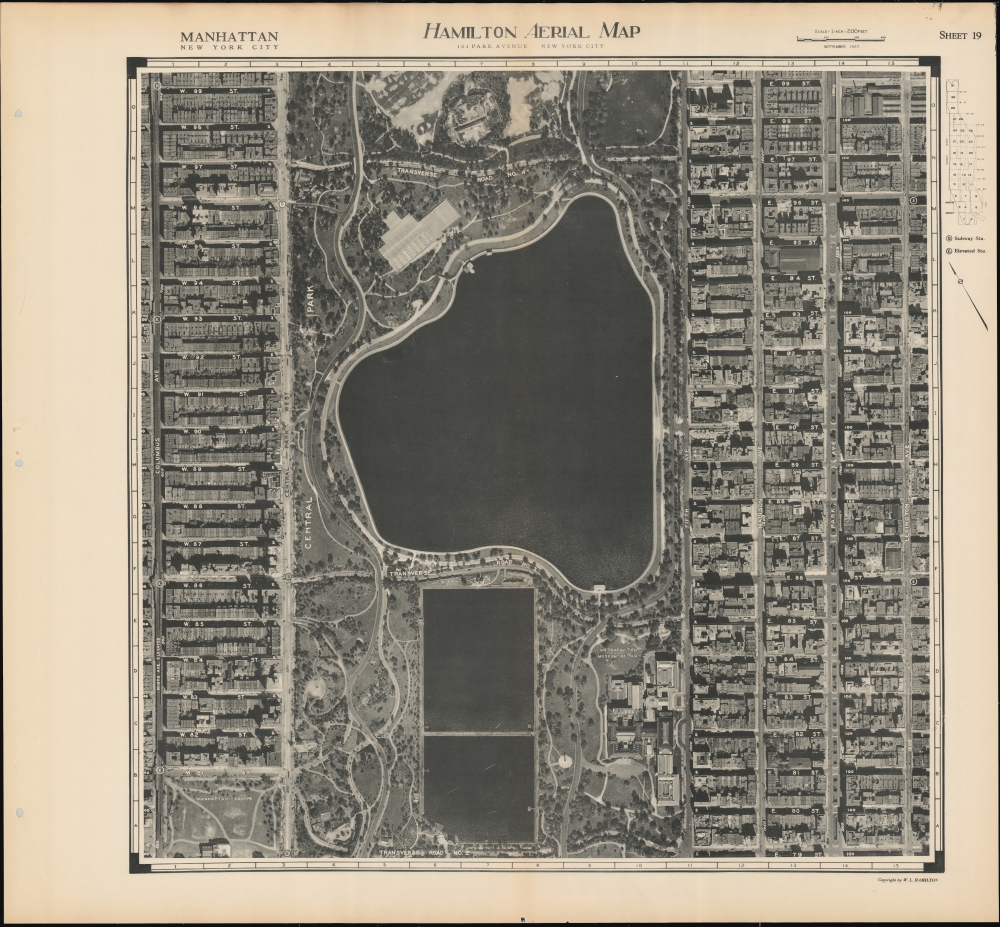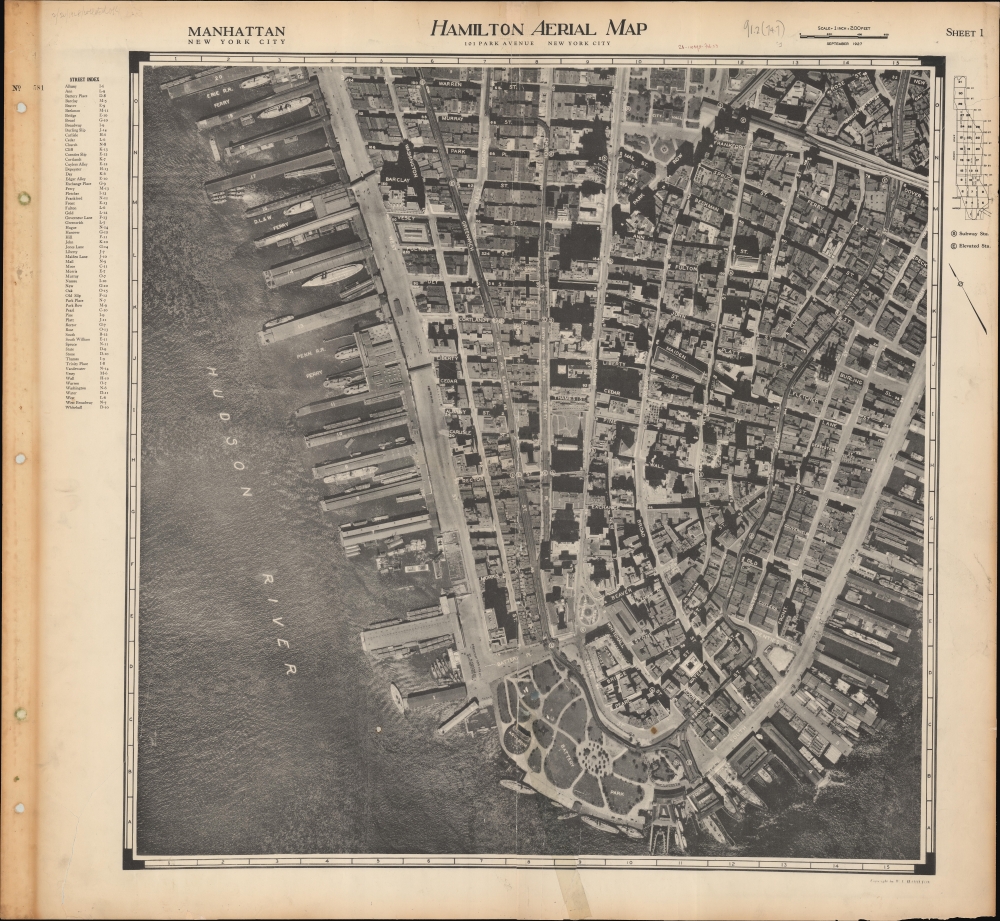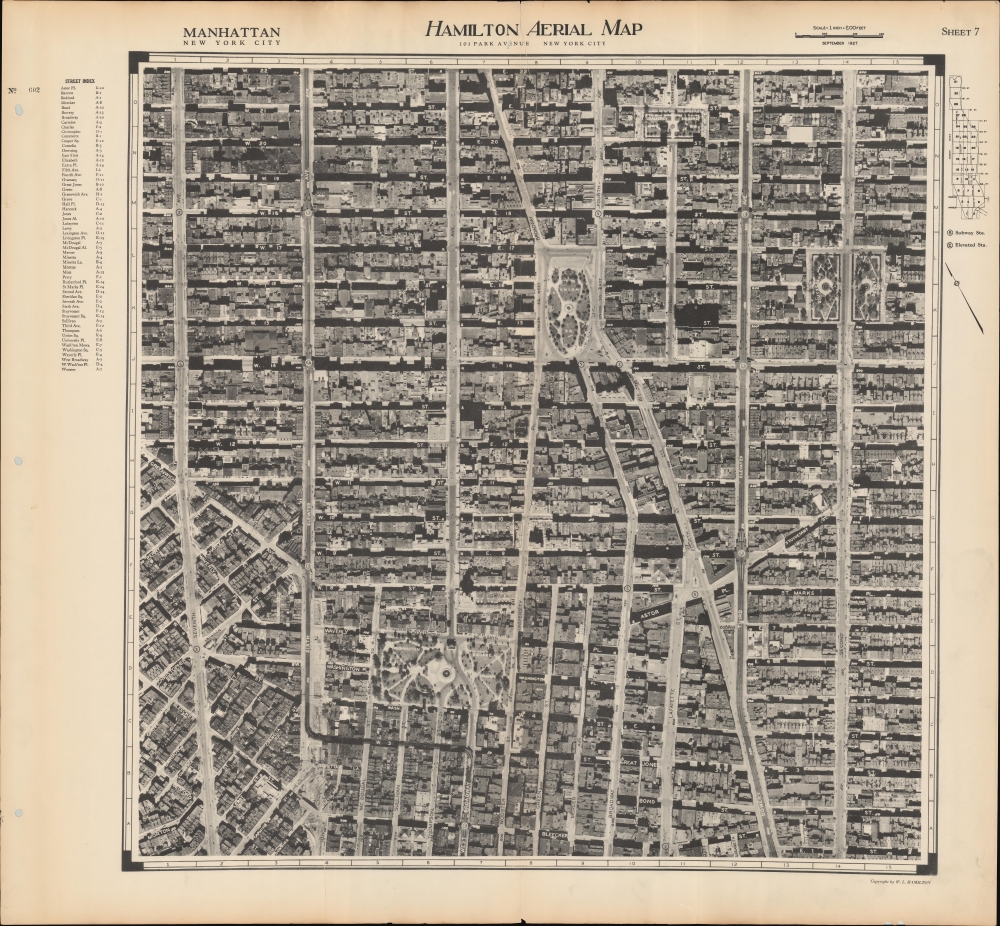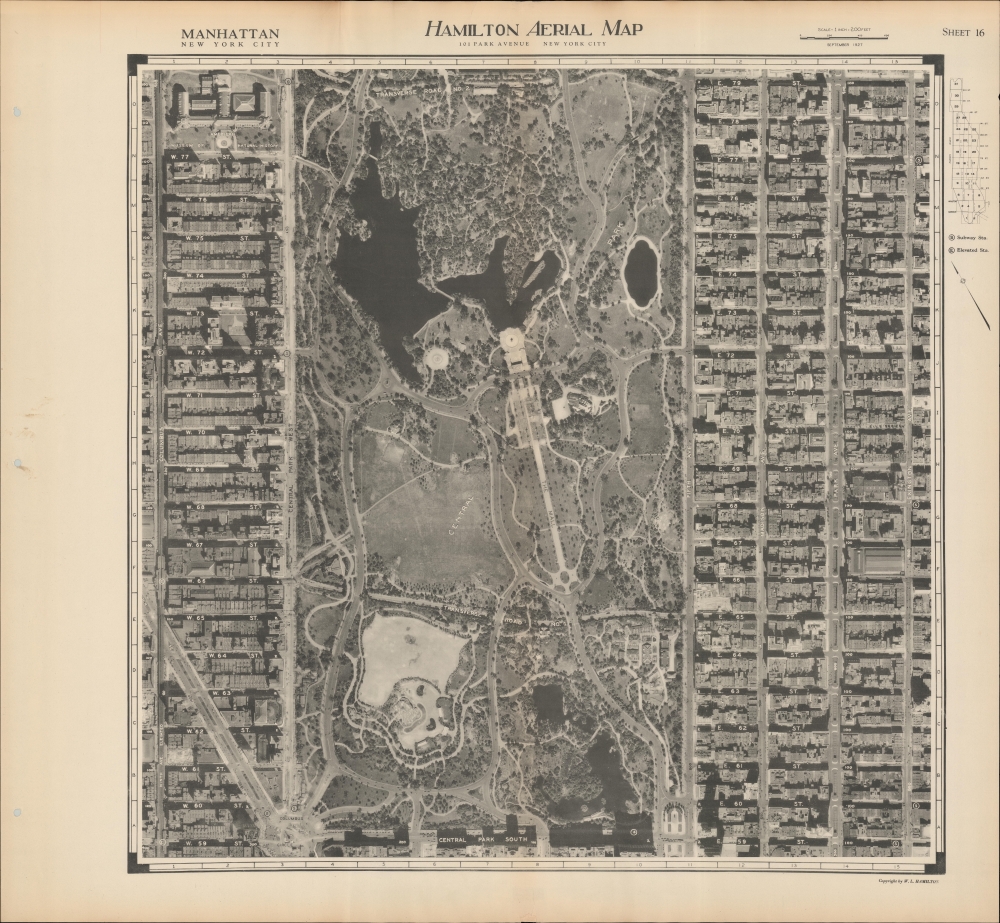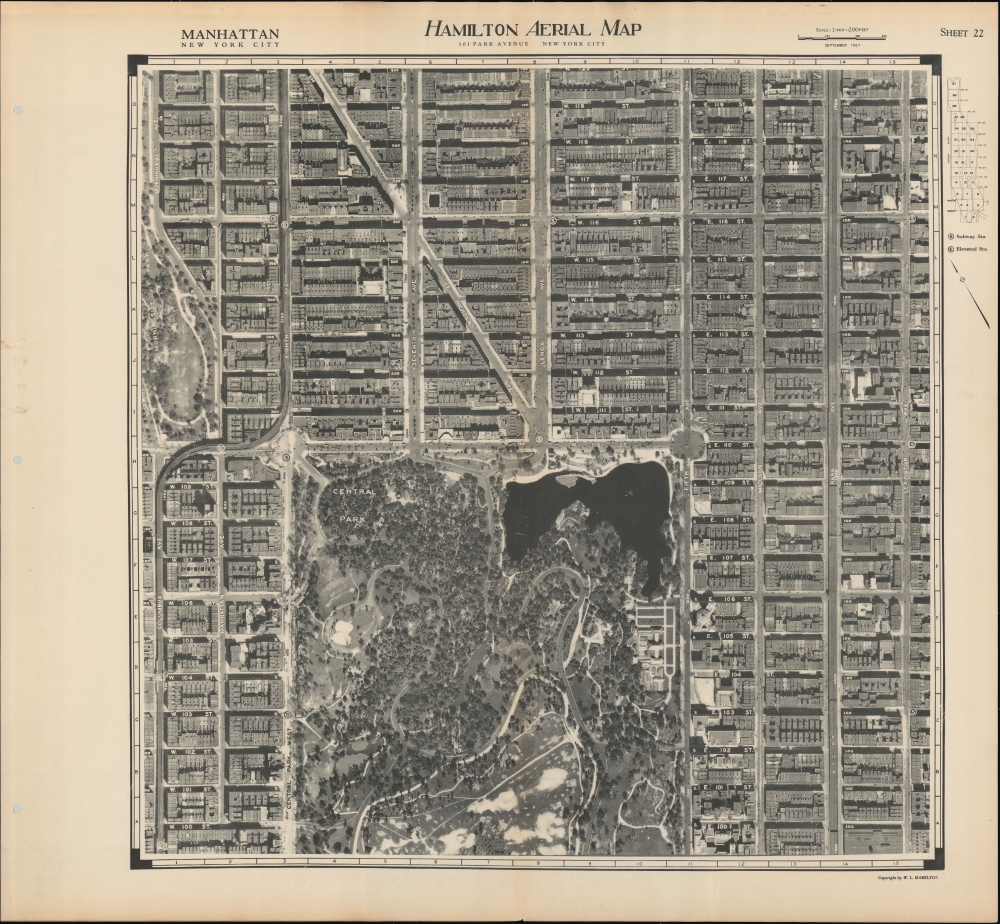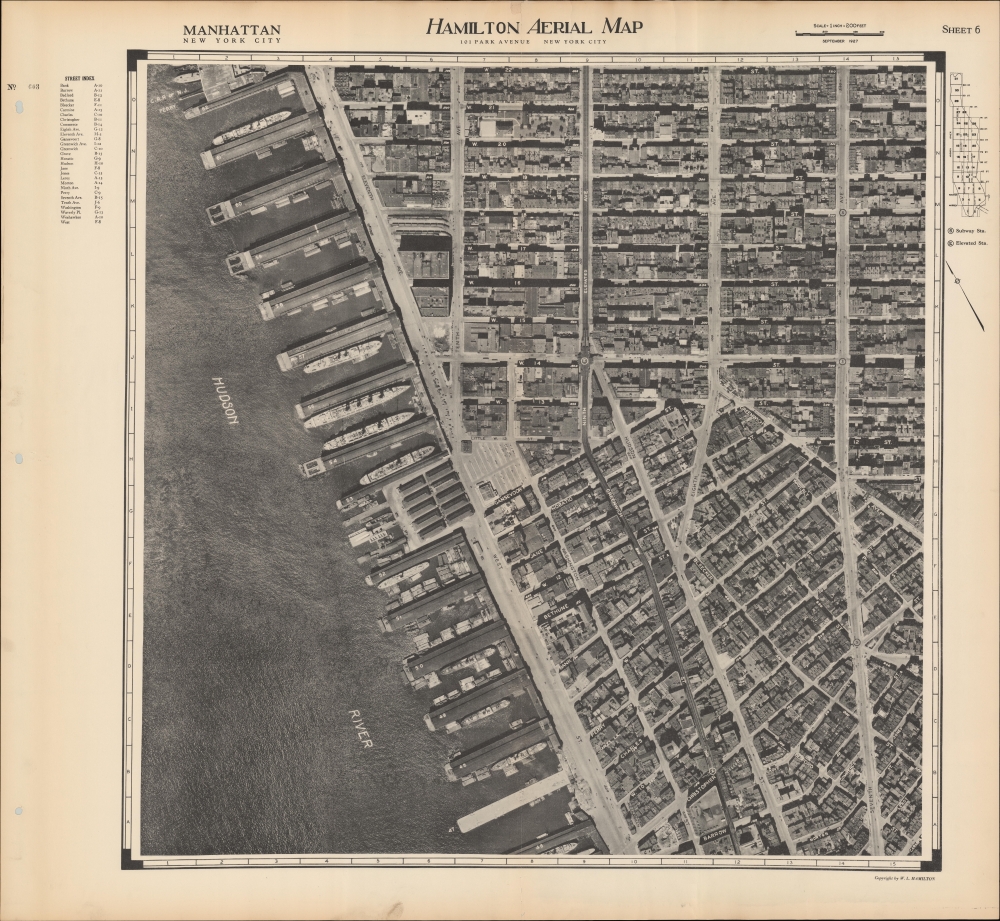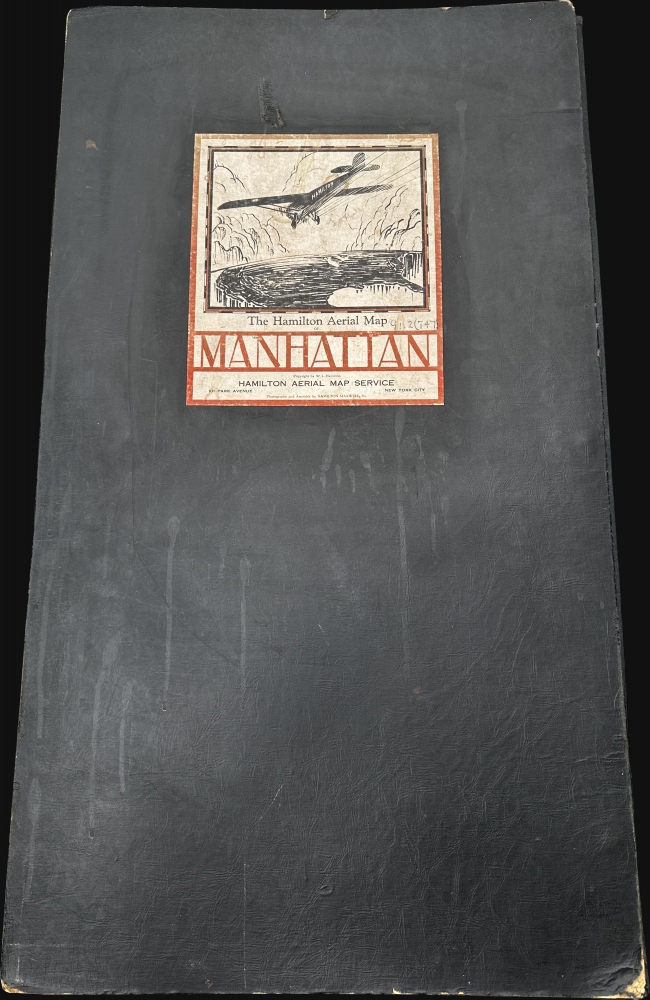This item has been sold, but you can get on the Waitlist to be notified if another example becomes available, or purchase a digital scan.
1927 Hamilton Aerial Map of New York City
NewYorkAerial-hamilton-1927
Title
1927 (undated) 124 x 418 in (314.96 x 1061.72 cm) 1 : 2400
Description
A Closer Look
The thirty-one sheets cover all of Manhattan on a uniform scale of 1:2400. The photographic images have been annotated with text, naming streets, blocks, piers, and more. Each sheet has an index in the upper left and key diagram in the upper right. Due to the map's large scale, the individual buildings, parks, and alleys are revealed in extraordinary detail. We particularly love the recognizable cars and enormous passenger ships docked along the Hudson - note the four-funnel steamer.A Rabbit Hole
Ok, so we went on a bit of a rabbit hole on this one. Only fifteen Four-Funnel steamships were produced. Pier 56, where this four-funnel is docked, then served Cunard, White Star, and Norwegian America. Based on the date, four-funnel design, and pier, this ship might be the RMS Aquitania (Cunard), RMS Mauretania (Cunard), or the RMS Olympic (White Star). If the scale of the map is accurate (it is), this ship measures 240 meters, making it either then Aquitania or the Mauretania (the Olympic was 270 meters long).Aerial Cartography
Aerial cartography was pioneered in Europe during World War I (1914 - 1918), when both sides developed techniques to quickly map enemy position from the air. After the war, the techniques were repurposed for civilian cartography. In New York, aerial cartography was pioneered by W. L. Hamilton (as here) and Sherman Fairchild. Fairchild and Hamilton issued the first aerial map of Manhattan in 1921, followed by a more general map of greater New York City in 1924. The present map, issued on a much larger and more ambitious scale than any previous aerial map, was issued by William Leon Hamilton in 1927.Publication History and Census
This map was printed and published in 1927 by William L. Hamilton. A much-reduced version on two sheets was issued in 1928 by The Globe. While a few institutions have individual sheets we are aware of only two full examples, at the New York Public Library and at the University of Chicago.Cartographer
William Leon Hamilton (June 1, 1896 - September 12, 1931) was an American pilot, aeronautical engineer, and aerial cartographer active in New York in the early 20th century. Hamilton was born in Ostego, New York. It is not clear where he became a pilot, but it may have been during service in Europe during World War I (1914 - 1818). He was a friend of Sherman Fairchild - playboy, heir, and aerial cartography pioneer. Fairchild convinced Hamilton to join his aerial photography company in 1920. Hamilton worked with Fairchild on several experimental aerial maps and helped to develop and test the Fairchild Aerial Camera in 1921. He struck out on his own, founding the Hamilton Aerial Map Service around 1926. Hamilton died in 1931 when his plane crashed near Albany, New York, while he was compiling an aerial survey of the Hudson River. While none know the cause of the crash, it is believed the engine stalled as he and. His copilot, Elliott Mitchell, were attempting to land at the Albany Airport. More by this mapmaker...


